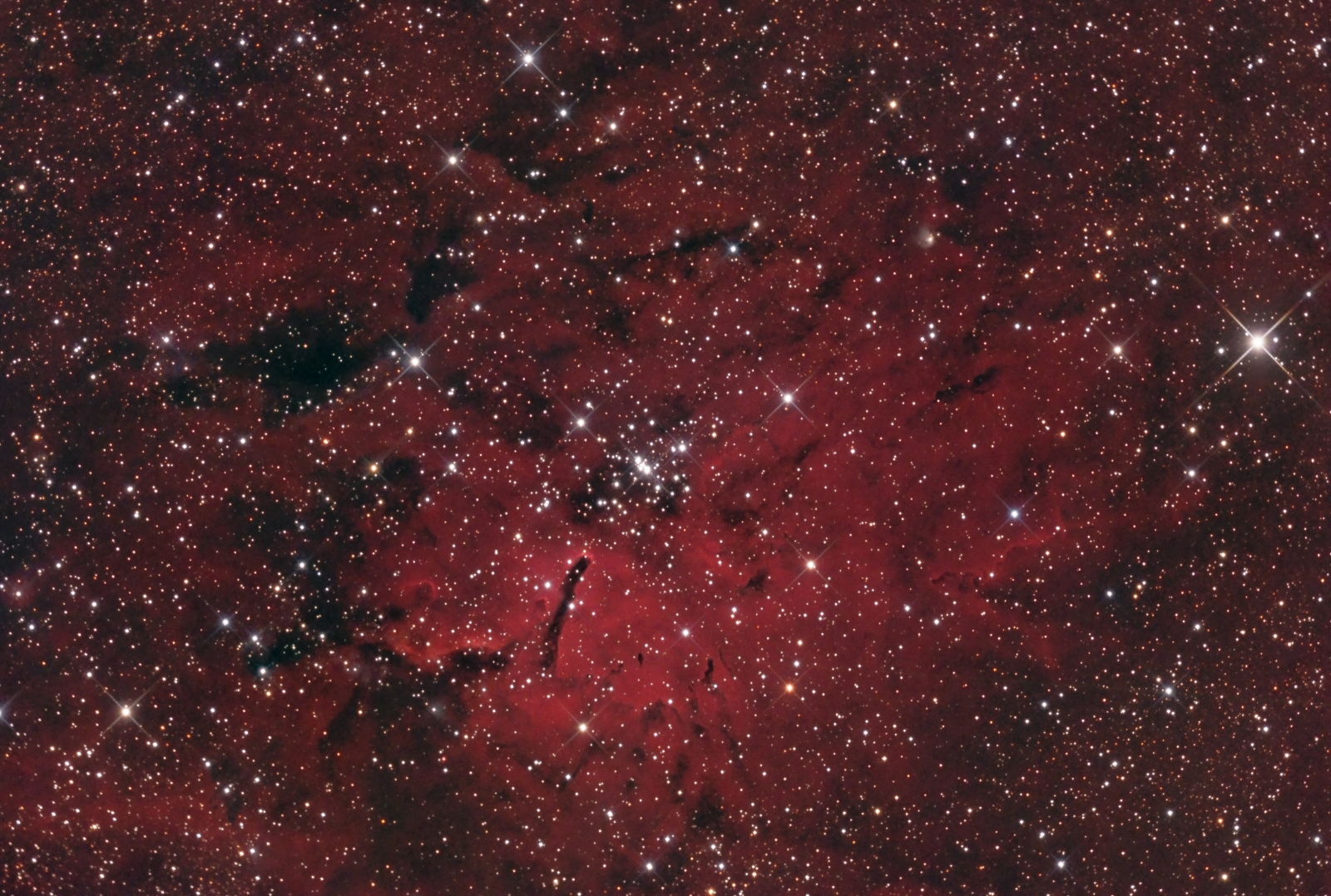Sh2-86 Emission Nebula (Colour)
Click image for full size version
August 11 2014 Published in Sky & Telescope January, 2015 (page image here)
For the last several months I have been shooting faint objects from the Sharpless catalogue. This image shows the very interesting Sh2-86 (aka NGC6820), a large emission in Vulpecula (the Little Fox). The roundish central nebula is about the size of the full moon on the sky. The star cluster in the middle of the nebula is NGC6823, and the stars at its centre are around 2 million years old, but the outer cluster stars are likely younger. The dark finger-like structure is thought to be caused by erosion in the nebula’s gas and dust caused by radiation from nearby stars. There are similar structures in the Eagle Nebula, sometimes called “The Pillars of Creation.” To give a sense of scale to this image, the open cluster is about 50 light years across, and both cluster and nebula are about 6000 light years away.
This image is an example of what can be achieved even under a nearly full moon using narrowband filters. The Ha data were acquired under a nearly full moon (the Ha image is here). See my article on imaging in moonlight for more information.
Tekkies:
Acquisition in Maxim DL. All pre-processing and processing in PixInsight. Acquired from my SkyShed in Guelph, ON. SBIG STL-11000 with Baader HaRGB filters. 10″ ASA @ f/6.8 on a Paramount MX. Guiding with SV-80 80 mm f/6 refractor and cameras Remote Guide Head. Imaging runs were scripted using CCDCommander. Moon near first quarter for RGB data and near full for H-alpha. Transparency and seeing average for R, G and B and excellent for H-alpha.
15x10m R, 9x10m G, 9x10m B, 42x10m Ha and 3x20m Ha (total – 13.5 hr)
The batch pre-processing script was used to calibrate, register and combine the frames. R, G, B and Ha channels were cropped, R, G and B were combined, and Ha and RGB were background corrected with DBE. Deconvolution was applied to the Ha channel, and the NB-RGB Combine script was used to combine the Ha and RGB data (Ha scale of 4). The resulting HaRGB file was processed with HistogramTransformation, ACDNR (small scale), another HistogramTransformation, and ACDNR (large scale on only the darkest areas of the image). The DarkStructureEnhance script was then applied with default settings except amount 0.25. A slight curve was applied to the entire image and the saturation of the stars increased slightly. The image was then split into small and large scale images (using LinearMultiscaleTransform) which were processed separately to enhance the nebula and star colour and then recombined in PixelMath. Image scale is 1.1 arcsec/pixel.







Congratulations! You are definitely playing with the Big League Imagers now! This is a beautiful “portrait” which ably represents the high-callibre of your work. I hope many more of your master-images will grace the pages of S&T in the future! — Stargazer Steve